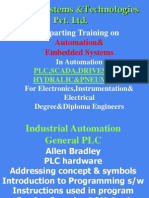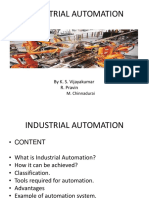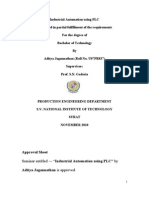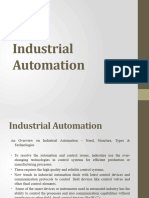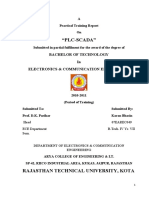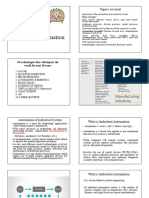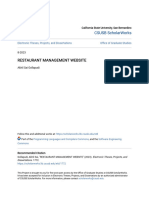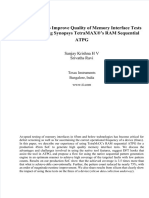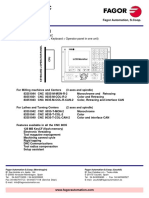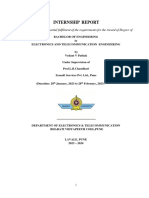ADIGRAT UNIVERSITY
COLLEGE OF ENGINEERING AND TECHNOLOGY
DEPARTMENT OF ELECTRICAL AND COMPUTER ENGINEERING
Industrial Automation
By Berihu B.
1
� What is industrial automation?
Industry: In a general sense the term “Industry” is defined as
follows.
Definition: Systematic Economic Activity that could be related to
Manufacture/Service/ Trade.
2
� What is industrial automation?
The word ‘Automation’ is derived from Greek
“Auto”(self) and “Matos” (moving).
Automation: is the mechanism for systems that “move by itself”.
Definition: Automation is a set of technologies that results in operation
of machines and systems without significant human intervention and
achieves performance superior to manual operation.
3
� What is industrial automation?
Industrial Automation: is the use of control systems and information
technologies to reduce the need for human work in the production of goods
and services in industries.
It is the implementation of automatic means in an industry.
It is a technique that can be used:
• To reduce costs and
• To improve quality.
• To save time
4
�Overview of Industrial Automation
Pneumatic
and Hydraulic
Power
Switchgear, electronics
Contactors
and Relays
Sensors Closed Loop
and Actors Controller
Automation
Electronic
Controls and Programmable
Microcontroller Logic Controller
Motors
5
� Main Advantages of Automation
Replacing human operator in tasks when things are beyond human
capabilities of size, weight, speed.
Improving in economy of enterprise, society or most of humankind.
Replacing human operators in tasks that involve hard physical work.
Replacing humans in tasks done in dangerous environments.
Reduces operation time and work handling time significantly.
6
� Main Disadvantage of Automation
Technical Limitation: Current technology is unable to automate all
the desired tasks
Unemployment rate increases due to machines replacing humans
and putting those humans out of their jobs.
High initial cost
7
� Types of Automation
Conventional Automation: uses relays as decision makers.
Basic elements of conventional industrial control system.
i. Logical sensors
ii. Relays
iii. logical actuators
Because of the relays, conventional industrial control systems are:
• bulky • troubleshooting is difficult
• costly • not reliable
• not flexible
• complex
8
�Types of Automation
9
� Logical Sensors
They are very important in any industrial control system.
Can only detect a state that is either true or false.
Sensor allows a relay or PLC to detect the state of a process.
Physical phenomena detected by logical sensors are:
• Inductive proximity
• Capacitive proximity
• Optical presence
• Mechanical contact
10
�Logical Sensors
11
� Relays as logical decision makers
Relays help us to switch on and off circuits without a mechanical
switch.
They are used to implement logics.
When current goes through the coil:
• A magnetic field is created
• The iron core becomes magnetic
• The electromagnetic force pools the switch
• A current can go through the switch
12
� Relays as logical decision makers
The coil has a core (1) and winding (3) with inputs terminals (A1,
A2); the contacts consist of a flipper (4), a return spring (2) and a
contact assembly with a changeover contact (5) and output terminals
(COM, NO, NC).
13
�Relays as logical decision makers
14
� Logical Actuator
Actuators are usually sources of motions.
Some examples of actuators are:
• Solenoids
• Motors
• Valves
• Cylinders
• Hydraulics
15
� Modern Industrial Automation
Modern industrial control systems use PLCs as decision makers.
PLCs are capable of:
• Storing instructions
• Sequencing
• Timing
• Counting
• Arithmetic control functions
16
� Modern Industrial Automation
PLC is an electronic device which uses programmable memory to
perform special functions such as logic sequencing, timing, counting
and computation through digital or analog input/output modules,
which controls variety of machines and processes.
Most widely used industrial process control technology
17





